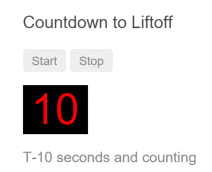Angular组件间怎么进行交互?常用交互方法介绍
组件之间的交互主要是在主从组件之间进行交互。那么Angular组件之间怎么进行交互?下面本篇文章给大家介绍一下Angular组件间进行常用交互的方法。

【相关教程推荐:《angular教程》】
1、通过输入型绑定把数据从父组件传到子组件
child.component.ts
export class ChildComponent implements OnInit {
@Input() hero: any;
@Input('master') masterName: string; // 第二个 @Input 为子组件的属性名 masterName 指定一个别名 master
constructor() { }
ngOnInit(): void {
}
}child.component.html
<div style="background-color: #749f84">
<p>child works!</p>
<h3>{{hero?.name}} says:</h3>
<p>I, {{hero?.name}}, am at your service, {{masterName}}.</p>
</div>parent.component.ts
export class ParentComponent implements OnInit {
hero = {name: 'qxj'}
master = 'Master'
constructor() {
}
ngOnInit(): void {
}
}parent.component.html
<app-child [hero]="hero" [master]="master"></app-child>
2、父组件监听子组件的事件
child.component.ts
export class ChildComponent implements OnInit {
@Input() name: string;
@Output() voted = new EventEmitter<boolean>();
didVote = false;
vote(agreed: boolean) {
this.voted.emit(agreed);
this.didVote = true;
}
constructor() { }
ngOnInit(): void {
}
}child.component.html
<h4>{{name}}</h4>
<button (click)="vote(true)" [disabled]="didVote">Agree</button>
<button (click)="vote(false)" [disabled]="didVote">Disagree</button>parent.component.ts
export class ParentComponent implements OnInit {
agreed = 0
disagreed = 0
voters = ['Narco', 'Celeritas', 'Bombasto']
onVoted(agreed: boolean) {
agreed ? this.agreed++ : this.disagreed++
}
constructor() {
}
ngOnInit(): void {
}
}parent.component.html
<h2>Should mankind colonize the Universe?</h2>
<h3>Agree: {{agreed}}, Disagree: {{disagreed}}</h3>
<app-child *ngFor="let voter of voters" [name]="voter" (voted)="onVoted($event)"></app-child>
3、父组件与子组件通过本地变量互动
父组件不能使用数据绑定来读取子组件的属性或调用子组件的方法。但可以在父组件模板里,新建一个本地变量来代表子组件,然后利用这个变量来读取子组件的属性和调用子组件的方法,如下例所示。
子组件 CountdownTimerComponent 进行倒计时,归零时发射一个导弹。start 和 stop 方法负责控制时钟并在模板里显示倒计时的状态信息。
child.component.ts
export class ChildComponent implements OnInit, OnDestroy {
intervalId = 0
message = ''
seconds = 11
clearTimer() {
clearInterval(this.intervalId)
}
ngOnInit() {
this.start()
}
ngOnDestroy() {
this.clearTimer()
}
start() {
this.countDown()
}
stop() {
this.clearTimer()
this.message = `Holding at T-${this.seconds} seconds`
}
private countDown() {
this.clearTimer()
this.intervalId = window.setInterval(() => {
this.seconds -= 1
if (this.seconds === 0) {
this.message = 'Blast off!'
} else {
if (this.seconds < 0) {
this.seconds = 10
} // reset
this.message = `T-${this.seconds} seconds and counting`
}
}, 1000)
}
}child.component.html
<p>{{message}}</p>parent.component.ts
export class ParentComponent implements OnInit {
constructor() {
}
ngOnInit(): void {
}
}parent.component.html
<h3>Countdown to Liftoff (via local variable)</h3>
<button (click)="child.start()">Start</button>
<button (click)="child.stop()">Stop</button>
<div class="seconds">{{child.seconds}}</div>
<app-child #child></app-child>
4、父组件调用<span style="font-size: 16px;">@ViewChild()</span>
这个本地变量方法是个简单便利的方法。但是它也有局限性,因为父组件-子组件的连接必须全部在父组件的模板中进行。父组件本身的代码对子组件没有访问权。
如果父组件的类需要读取子组件的属性值或调用子组件的方法,就不能使用本地变量方法。
当父组件类需要这种访问时,可以把子组件作为 ViewChild,***注入***到父组件里面。
countdown-parent.component.ts
import {AfterViewInit, Component, ViewChild} from '@angular/core'
import {ChildComponent} from '../child/child.component'
@Component({
selector: 'app-parent-vc',
template: `
<h3>Countdown to Liftoff (via ViewChild)</h3>
<button (click)="start()">Start</button>
<button (click)="stop()">Stop</button>
<div class="seconds">{{ seconds() }}</div>
<app-child></app-child>
`,
})
export class CountdownParentComponent implements AfterViewInit {
@ViewChild(ChildComponent)
private timerComponent: ChildComponent
seconds() {
return 0
}
ngAfterViewInit() {
// Redefine `seconds()` to get from the `ChildComponent.seconds` ...
// but wait a tick first to avoid one-time devMode
// unidirectional-data-flow-violation error
setTimeout(() => {
this.seconds = () => this.timerComponent.seconds
}, 0)
}
start() {
this.timerComponent.start()
}
stop() {
this.timerComponent.stop()
}
}更多编程相关知识,请访问:编程入门!!
以上是Angular组件间怎么进行交互?常用交互方法介绍的详细内容。更多信息请关注PHP中文网其他相关文章!

热AI工具

Undresser.AI Undress
人工智能驱动的应用程序,用于创建逼真的裸体照片

AI Clothes Remover
用于从照片中去除衣服的在线人工智能工具。

Undress AI Tool
免费脱衣服图片

Clothoff.io
AI脱衣机

AI Hentai Generator
免费生成ai无尽的。

热门文章

热工具

记事本++7.3.1
好用且免费的代码编辑器

SublimeText3汉化版
中文版,非常好用

禅工作室 13.0.1
功能强大的PHP集成开发环境

Dreamweaver CS6
视觉化网页开发工具

SublimeText3 Mac版
神级代码编辑软件(SublimeText3)

热门话题
 聊聊Angular中的元数据(Metadata)和装饰器(Decorator)
Feb 28, 2022 am 11:10 AM
聊聊Angular中的元数据(Metadata)和装饰器(Decorator)
Feb 28, 2022 am 11:10 AM
本篇文章继续Angular的学习,带大家了解一下Angular中的元数据和装饰器,简单了解一下他们的用法,希望对大家有所帮助!
 如何在Ubuntu 24.04上安装Angular
Mar 23, 2024 pm 12:20 PM
如何在Ubuntu 24.04上安装Angular
Mar 23, 2024 pm 12:20 PM
Angular.js是一种可自由访问的JavaScript平台,用于创建动态应用程序。它允许您通过扩展HTML的语法作为模板语言,以快速、清晰地表示应用程序的各个方面。Angular.js提供了一系列工具,可帮助您编写、更新和测试代码。此外,它还提供了许多功能,如路由和表单管理。本指南将讨论在Ubuntu24上安装Angular的方法。首先,您需要安装Node.js。Node.js是一个基于ChromeV8引擎的JavaScript运行环境,可让您在服务器端运行JavaScript代码。要在Ub
 angular学习之详解状态管理器NgRx
May 25, 2022 am 11:01 AM
angular学习之详解状态管理器NgRx
May 25, 2022 am 11:01 AM
本篇文章带大家深入了解一下angular的状态管理器NgRx,介绍一下NgRx的使用方法,希望对大家有所帮助!
 浅析angular中怎么使用monaco-editor
Oct 17, 2022 pm 08:04 PM
浅析angular中怎么使用monaco-editor
Oct 17, 2022 pm 08:04 PM
angular中怎么使用monaco-editor?下面本篇文章记录下最近的一次业务中用到的 monaco-editor 在 angular 中的使用,希望对大家有所帮助!
 Angular + NG-ZORRO快速开发一个后台系统
Apr 21, 2022 am 10:45 AM
Angular + NG-ZORRO快速开发一个后台系统
Apr 21, 2022 am 10:45 AM
本篇文章给大家分享一个Angular实战,了解一下angualr 结合 ng-zorro 如何快速开发一个后台系统,希望对大家有所帮助!
 如何使用PHP和Angular进行前端开发
May 11, 2023 pm 04:04 PM
如何使用PHP和Angular进行前端开发
May 11, 2023 pm 04:04 PM
随着互联网的飞速发展,前端开发技术也在不断改进和迭代。PHP和Angular是两种广泛应用于前端开发的技术。PHP是一种服务器端脚本语言,可以处理表单、生成动态页面和管理访问权限等任务。而Angular是一种JavaScript的框架,可以用于开发单页面应用和构建组件化的Web应用程序。本篇文章将介绍如何使用PHP和Angular进行前端开发,以及如何将它们
 浅析Angular中的独立组件,看看怎么使用
Jun 23, 2022 pm 03:49 PM
浅析Angular中的独立组件,看看怎么使用
Jun 23, 2022 pm 03:49 PM
本篇文章带大家了解一下Angular中的独立组件,看看怎么在Angular中创建一个独立组件,怎么在独立组件中导入已有的模块,希望对大家有所帮助!







